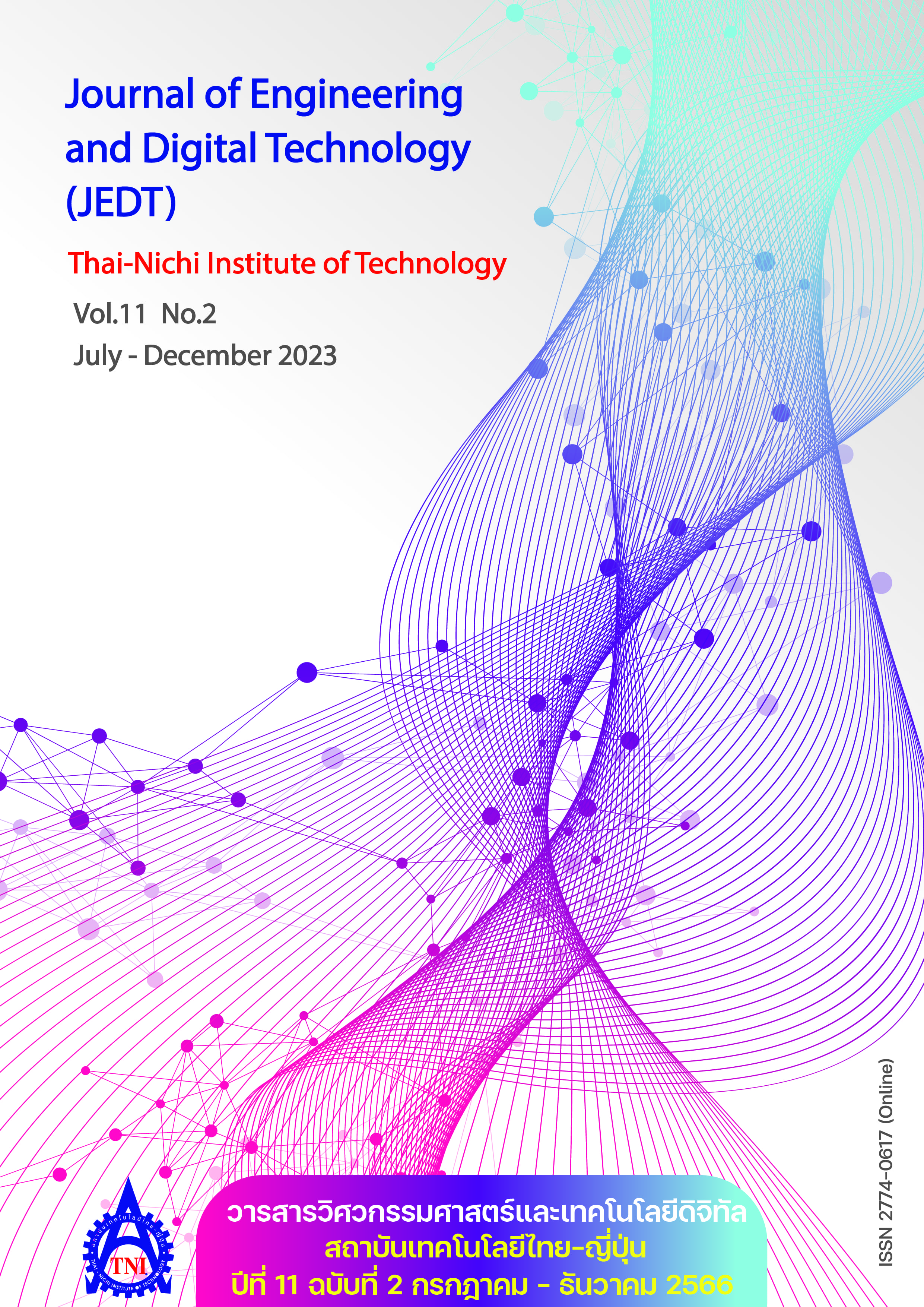The Prediction Model of PM2.5 in Phayao Province
Main Article Content
Abstract
The dust in the atmosphere (Particulate Matter with a diameter less than or equal to 2.5 micrometers; PM2.5) is the most significant air pollution in the northern region of Thailand, directly and indirectly affecting the health of the people. This pollution in Phayao province has consistently ranked in the top 3 of Thailand’s northern regions. Forecasting the concentration of PM2.5 in the atmosphere using a mathematical model is an alternative that can be employed as a guideline for planning solutions or preventing air pollution problems. Logistic regression analysis and data from the Thai Meteorological Department and Pollution Control Department were applied to this prediction model. The 5 years of data between 2015–2021 were utilized for this model and created using Python programming. The results demonstrate that the independent variables of this model are PM10, NO2, O3 and CO. The sensitivity and specificity are 0.96 and 0.72, respectively. The area under the curve (AUC) is 0.98.
Article Details

This work is licensed under a Creative Commons Attribution-NonCommercial-NoDerivatives 4.0 International License.
Article Accepting Policy
The editorial board of Thai-Nichi Institute of Technology is pleased to receive articles from lecturers and experts in the fields of engineering and technology written in Thai or English. The academic work submitted for publication must not be published in any other publication before and must not be under consideration of other journal submissions. Therefore, those interested in participating in the dissemination of work and knowledge can submit their article to the editorial board for further submission to the screening committee to consider publishing in the journal. The articles that can be published include solely research articles. Interested persons can prepare their articles by reviewing recommendations for article authors.
Copyright infringement is solely the responsibility of the author(s) of the article. Articles that have been published must be screened and reviewed for quality from qualified experts approved by the editorial board.
The text that appears within each article published in this research journal is a personal opinion of each author, nothing related to Thai-Nichi Institute of Technology, and other faculty members in the institution in any way. Responsibilities and accuracy for the content of each article are owned by each author. If there is any mistake, each author will be responsible for his/her own article(s).
The editorial board reserves the right not to bring any content, views or comments of articles in the Journal of Thai-Nichi Institute of Technology to publish before receiving permission from the authorized author(s) in writing. The published work is the copyright of the Journal of Thai-Nichi Institute of Technology.
References
S. Pansripong, “Development of artificial neural network model and multiple regression models for prediction of PM10 concentrations in Bangkok and Nakhon Ratchasima municipality area,” (in Thai), M.S. thesis, Dept. Environ. Eng., Suranaree Univ. Technol., Nakhon Ratchasima, Thailand, 2007.
W. Simachaya. “Smog Pollution in the Northern: Problems and Solutions.” (in Thai), PCD.go.th. https://www.pcd.go.th/wp-content/uploads/2020/06/pcdnew-2020-06-05_07-33-31_040770.pdf (accessed Feb. 1, 2023).
S. Pimonsree and P. Arrin, “Situation of Particulate Matter in Ambient Air and Impacts on Healthy,” (in Thai), in Proc. Naresuan Res. Conf.: Sustain. Ways of Living Based on Sufficiency Economy, Phitsanulok, Thailand, Jul. 2010, pp. 670–681.
T. Rattanapong, “University of Phayao joins forces with RISC by MQDC to move forward with Fasai 2 to Phayao, expanding urban air purification towers for people in the region to further research towards understanding PM 2.5 dust in the northern region.” (in Thai), UP.ac.th. https://www.up.ac.th/th/NewsRead.aspx?itemID=23918 (accessed Jul. 2, 2021).
Greenpeace Thailand. “The different air quality measurement standards.” (in Thai), GREENPEACE.org. https://www.greenpeace.org/thailandexplore/protect/cleanair/air-standard/ (accessed Nov. 23, 2022).
K. Meksagul and A. Phantong, “The prediction model of climate in Phayao,” (in Thai), in Proc. Operations Res. Netw. (OR-net) Conf., Chiang Mai, Thailand, Feb. 2019, pp. 30–40.
U. Amornnimit, “Logistic regression: Choice of risk analysis,” (in Thai), Univ. Thai Chamber of Commerce J., vol. 23, no. 2, pp. 21–35, 2003.
V. Kovenko and V. Shevchuk. “Machine Learning with Python: Differences between classification and regression.” READTHEDOCS.io. https://machine-learning-and-data-science-with-python.readthedocs.io/en/latest/assignment1_sup_ml_cls.html (accessed July. 2, 2021).
K. Pearson, “Notes on the history of correlation,” Biometrika, vol. 13, no. 1, pp. 25–45, 1920.
B. Pommapun, “Techniques for data interpreting for using correlation and regression in research,” (in Thai), STOU Educ. J., vol. 11, no. 1, pp. 32–45, 2018.
S. Srithongchai, “A PM2.5 prediction model using LSTM neural network in Bangkok area,” (in Thai), J. Eng. Digit. Technol. (JEDT), vol. 10, no. 1, pp. 1–9, 2022.
R. Kladchuen and C. Sanrach, “An efficiency comparison of algorithms and feature selection methods to predict the learning achievement of vocational students,” (in Thai), Res. J. Rajamangala Univ. Technol. Thanyaburi, vol. 17, no. 1, pp. 1–10, 2018.
C. Pruekpramool, N. Jaroentaku, and S. Srisuttiyakorn, “Efficiency of Pearson, Spearman and Kendall’s correlation coefficients when data is non-normal distributed,” (in Thai), OJED, vol. 15, no. 2, 2020, Art. no. OJED1502040.
B. Srisa-ard, Basic Research, 10th ed. Bangkok, Thailand: SUWEERIVASARN (in Thai), 2017.
S. Zhai et al., “Fine particulate matter (PM2.5) trends in China, 2013–2018: separating contributions from anthropogenic emissions and meteorology,” Atmos. Chem. Phys., vol. 19, no. 16, pp. 11031–11041, Aug. 2019, doi: 10.5194/acp-19-11031-2019.
M. Lachatre et al., “The unintended consequence of SO2 and NO2 regulations over China: Increase of ammonia levels and impaction PM2.5 concentrations,” Atmos. Chem. Phys., vol. 19, no. 10, pp. 6701–6716, May 2019, doi: 10.5194/acp-19-6701-2019.


